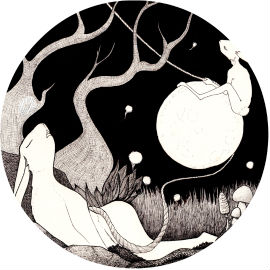I really enjoyed visiting Waterland, the district that encompasses both Monnickendam, where these photographs were taken, and Broek. I’m not the first to enjoy a stroll through the area. In 1905, an Englishman by the name of Edward Verrall Lucas published a book about his visit to the Netherlands: A Wanderer in Holland. It’s an endearing book, which records the author’s insights and observations about architecture, culture and landscape. I suspect the book (one of about 100 he published during his lifetime) is a collection of columns published under the heading ‘A Wanderer’s Notebook’ for The Sunday Times.
Lucas was born into a Quaker family in Saffron Walden in June 1868. His first job was in a bookshop, although later he moved on to write for Punch, The Globe and The Sunday Times. Later in life he was on the board of directors of Methuen & Co. I love his wanderer’s stories, but if you’re a cricket buff you might enjoy his rather delicious cricket articles, many of which were collected into a book called Cricket All His Life in 1950.
Here’s what he has to say about Monnickendam and Broek:
… the front doors of many of Broek’s houses are opened only twice in their owners’ lives–when they marry and when they die. For the rest the back door must serve. The custom is not confined to Broek, but is found all over North Holland. These ceremonial front doors are often very ornate. It was also at Broek that Ireland [an earlier visitor to Holland] picked up his information as to the best means of winning the Dutch heart. “Laughable as it may seem, a safe expedient to insure the affections of the lower class of these lasses, is to arm yourself well with gingerbread. The first question the lover is asked after knocking at the door, when the parents are supposed to be in bed, is, ‘Have you any gingerbread?’ If he replies in the affirmative, he finds little difficulty in gaining admission. A second visit ensures his success, and the lady yields.”
I can add a little to this. When a young man thinks of courting he first speaks to the parents, and if they are willing to encourage him he is asked to spend the evening with their daughter. They then discreetly retire to bed and leave the world to him. Under his arm is a large cake, not necessarily of gingerbread, and this he deposits on the table, with or without words. If he is acceptable in the girl’s eyes she at once puts some more peat on the fire. He then knows that all is well with him: the cake is cut, and Romance is king. But if the fire is not replenished he must gather up his cake and return to his home. A very favourite Dutch picture represents “The Cutting of the Cake”. I have heard that the Dutch wife takes her husband’s left arm; the Dutch fiancee her lover’s right.
Monnickendam, on the shores of the Zuyder Zee, is now a desolate sleepy spot; once it was one of the great towns of Holland, at the time when The Hague was a village. I say Zuyder Zee, but strictly speaking it is on the Gouwzee, the name of the straits between Monnickendam and Marken. It is here, in winter, when the ice holds, that a fair is held, to which come all Amsterdam on skates, to eat poffertjes and wafelen.
Monnickendam affords our first sight of what are called very misleadingly the ‘Dead Cities of the Zuyder Zee,’ meaning merely towns which once were larger and busier. Monnickendam was sufficiently important to fit out a fleet against the Spanish in 1573, under Cornelius Dirckszoon (whose tomb we saw at Delft) and capture Bossu in the battle of Hoorn.
To-day Monnickendam suggests nothing so little as a naval engagement. People live there, it is true, but one sees very few of them. Only in an old English market town on a hot day … do you get such desertion and quiet and imperturbability. Monnickendam has, however, a treasure that few English towns can boast–its charming little stadhuis tower, one of the prettiest in Holland, with a happy peal of bells, and mechanical horses* in action once an hour; while the tram line running right down the main street periodically awakens the populace.
The mechanical horses are part of a fifteenth century carillon clock tower. You know how I love mechanical animals and people! The horsemen parade around the clock tower each hour, as the bells peal. They’re very difficult to see from the street, as they’re very high up, and race past inside a small viewing window. But still … mechanical horses! Oh yeah!





No Comments